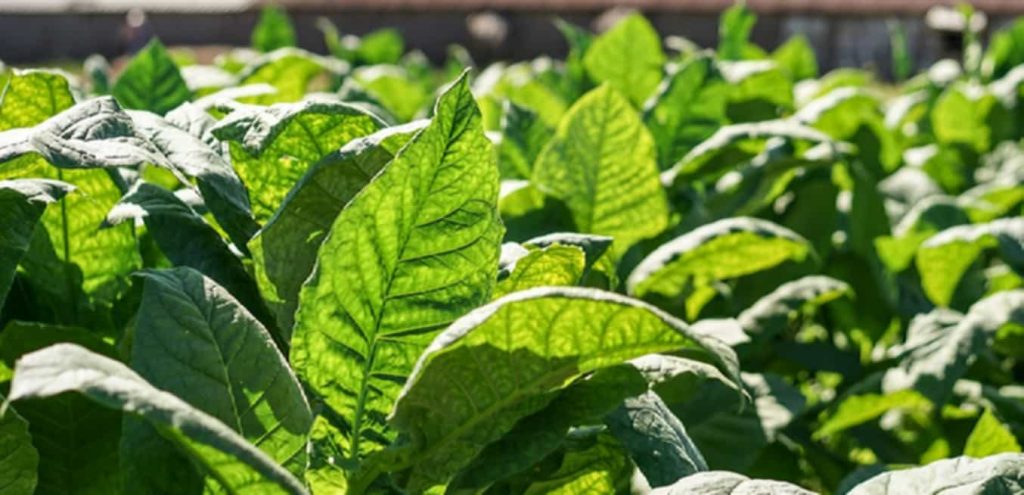Kentucky’s tobacco farming industry is a fascinating world, steeped in tradition and resilience. From the planting of seeds to the final product, this age-old practice has shaped the state’s agricultural landscape. Join us as we delve into the intricacies of tobacco farming in Kentucky, exploring its history, process, and significance.
The Early Days
Tobacco farming in Kentucky dates back to the 18th century when settlers first began cultivating the crop. The fertile soil and favorable climate made the state an ideal location for tobacco farming.
The Golden Age of Tobacco
The 20th century marked the golden age of tobacco in Kentucky. The demand for Kentucky’s burley tobacco, known for its robust flavor and high-quality, skyrocketed, making it a lucrative crop for farmers.
Planting and Growing
The process of tobacco farming begins with planting seeds in a greenhouse. Once the seedlings are strong enough, they are transplanted to the fields. The plants require careful tending to ensure they grow healthy and strong.
Harvesting and Curing
Harvesting is a labor-intensive process that involves hand-picking the leaves. After harvesting, the leaves are air-cured in barns, a process that can take up to eight weeks.
Economic Impact
Tobacco farming has been a significant part of Kentucky’s economy for centuries. It has provided livelihoods for thousands of farmers and contributed significantly to the state’s revenue.
Cultural Influence
Tobacco farming has also shaped Kentucky’s culture. It has influenced the state’s music, literature, and even its cuisine.
Weather and Environmental Factors
Tobacco farming is not without its challenges. Weather and environmental factors can significantly impact the crop’s yield and quality.
Market Fluctuations
Market fluctuations also pose a challenge. Changes in consumer demand, trade policies, and global market trends can affect the profitability of tobacco farming.
Technological Advancements
Technological advancements are changing the face of tobacco farming. From automated planting to precision agriculture, technology is helping farmers increase efficiency and yield.
Market Trends and Predictions
While the demand for tobacco has decreased in recent years, Kentucky’s tobacco farms are adapting. Some are diversifying their crops, while others are focusing on niche markets like organic tobacco.
what is the history of tobacco farming in kentucky
Tobacco farming has a long and significant history in Kentucky, dating back to the state’s early days. Kentucky became the fifteenth state to join the Union on June 1, 1792, and its economy flourished through the production of tobacco, which was the state’s main cash crop. By 1820, twenty percent of the production of tobacco for habitat utilization was coming from Kentucky.
Tobacco was grown from the beginning of Kentucky’s history to supply domestic needs and was an important factor in shaping the American experience. The state is known for its production of burley tobacco and dark fire- and air-cured tobaccos. In fact, Kentucky is the nation s largest producer of these types of tobacco.
The cultivation of tobacco has not only been an economic activity but also a cultural one. The process of growing tobacco and the culture that has developed around that process are deeply embedded in Kentucky’s roots. Despite the challenges and changes over the years, tobacco farming remains a significant part of Kentucky’s agricultural landscape.
In the early days, enslaved workers were a major source of labor in Kentucky s tobacco fields. In recent years, foreign workers have done the grueling seasonal work that Americans largely avoid. Despite the hard work and challenges, tobacco farming has persisted and continues to play a role in Kentucky’s economy and culture.
Over the years, the tobacco industry in Kentucky has faced numerous challenges and changes. The value of tobacco production in Kentucky has averaged more than $800 million during the decade of the 1990s, compared to averaging $705 million during the 1980s, and $443 million during the 1970s. However, the industry has been shrinking, with fewer tobacco farms producing less tobacco.
Conclusion
Kentucky’s tobacco farming industry is a testament to the state’s resilience and adaptability. Despite the challenges, it continues to be a significant part of Kentucky’s agricultural landscape, shaping its economy and culture. As we look to the future, it’s clear that Kentucky’s tobacco farms will continue to evolve, adapting to new technologies and market trends.
Statistics
Economic Impact
Tobacco farming has a significant economic impact in Kentucky. In several counties, it directly accounts for more than 10% of the total personal income. The value of tobacco production generally exceeds $1 million annually for more than 100 Kentucky counties.
Production and Sales
Kentucky is a leading producer of burley tobacco and dark fire- and air-cured tobaccos. The state’s tobacco production and processing sectors account for 6% of the total gross value of the Kentucky economy.
Books
Tobacco Culture: Farming Kentucky’s Burley Belt
This book by John van Willigen and Susan C. Eastwood provides an in-depth look at the process of raising a crop of burley tobacco from the perspective of the farmers themselves https://www.goodreads.com/book/show/1912563.Tobacco_Culture.
Burley: Kentucky Tobacco in a New Centur
Ann K. Ferrell’s book offers a contemporary look at the rapidly transforming process of raising and selling tobacco in Kentucky https://www.amazon.com/Burley-Kentucky-Tobacco-Century-Remembered/dp/0813167582.
Sources of Information
The University of Kentucky is a reliable source of information on tobacco farming, offering research-based recommendations to produce high-yielding, high-quality tobacco https://www2.ca.uky.edu/agcomm/pubs/ID/ID160/ID160.pdf.
KyFoodandFarm.info provides quick agricultural facts about Kentucky, including data on tobacco farming https://www.kyfoodandfarm.info/quick-ag-facts.
The Transnational Institute offers research on the transition away from tobacco farming in Kentucky, providing insights into the socio-economic impacts of this shift https://www.tni.org/en/publication/the-kentucky-tobacco-transition-exploring-transitional-outcomes-from-a-socio-ecological.
Citations
The University of Kentucky’s research and publications provide valuable insights into effective practices for burley tobacco production https://core.ac.uk/download/pdf/232564174.pdf.
KyFoodandFarm.info offers a wealth of data on Kentucky’s agricultural sector, including tobacco farming https://www.kyfoodandfarm.info/quick-ag-facts.
The Transnational Institute’s research provides a socio-ecological perspective on the transition away from tobacco farming in Kentucky https://www.tni.org/en/publication/the-kentucky-tobacco-transition-exploring-transitional-outcomes-from-a-socio-ecological.
